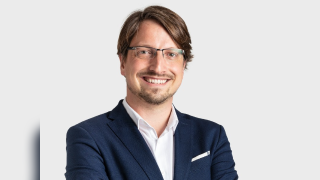What are the reasons for OTEGLOBE’s enhancement of its European network, and how will this benefit its wholesale customers?
The new dark fibre route is in line with our identification of a gap for diversity in the Mediterranean and southern Europe, offering our customers a new, alternative route to connect to eastern or western Europe through Greece, and complementing OTEGLOBE’s existing infrastructure. It runs through Greece, Italy, France, Switzerland, the UK, the Netherlands and Germany, and is also fully complementary to the launch of the AAE-1 cable earlier this year, on which OTEGLOBE acts as a landing party in Chania, Crete. Overall, it provides customers a completely new, alternative path for traffic arriving via AAE-1 from Asia that they want to route on through Europe.
So on top of having a solid route between the continents with AAE-1, customers can also gain an extra reliable one through western Europe itself. In a short space of time, we have therefore helped to boost both Europe-to-Asia and intra-European interconnection.
Can you describe exactly what the enhancement of OTEGLOBE’s European network has consisted of and why you consider it important for the market today?
This project has involved two phases, the first being the development of a new backbone network across Italy using OTEGLOBE’s own fibre, and the acquisition of thousands of kilometres of dark fibre in many European countries to complete a robust route from southeast Europe through to western Europe. The second phase sees the unification of OTEGLOBE’s existing network infrastructure, via the Balkans with the TransBalkan Network [TBN] and via Italy with the Greek western European Network [GWEN], into a single optical multi-terabit network of mesh architecture, with the aid of Infinera’s state-of-the-art DTN-X platform.
Upon the infrastructure’s imminent completion, OTEGLOBE’s backbone will offer four diverse fibre routes between Greece and the Balkans to Italy and western Europe, providing seamless connectivity in the region along with highly competitive pricing. In this way, OTEGLOBE can help partners capitalise on the capabilities that its 21,000-kilometre network offers in the EMEA region, catering for ever-rising bandwidth needs through a long-haul network that’s optimised to meet future capacity requirements and transmission rates.
What advantages does OTEGLOBE offer customers seeking to connect between Asia and Europe over those of other carriers?
OTEGLOBE is well-positioned to carry traffic travelling between regions for customers, given its location close to several different continents. Traffic also has much less far to travel under water when arriving in Europe to Chania than to other markets in the region, making it less likely to be affected by subsea fibre cuts that can interrupt flow. The AAE-1 cable will, in addition, boost traffic between regions and demand into Europe, so we are perfectly placed to serve these needs – and being able to offer an enhanced, protected terrestrial network in Europe means we can ensure resilience and diversity for any customers who wish to link up with us in the region. On top of all that, we offer fast service delivery times over a scalable and flexible network platform. All in all, we really believe we can help meet many of our customers’ international traffic needs of the future, boosted by our new network developments.
What kind of investment and resources did the new European network project require, and what challenges did OTEGLOBE have to overcome to put it into effect?
OTEGLOBE made a significant commitment and investment in this project, and there was a huge amount of network deployment involved. It required the acquisition of about 6,600 kilometres of leased dark fibre, and the commissioning and installation of equipment at 90 sites across six countries. On top of that, there was a need to handle numerous challenges with regard to technology, fibre and facilities, and coordinate the efforts of different vendors and providers while ensuring cost-efficiencies. Furthermore, the project was carried out to a very tight time frame, in order to also be aligned with the AAE-1 commercial launch, so necessitated rapid deployment.
Can you also shed some more light on the current status of the AAE-1 cable?
The AAE-1 subsea cable started commercial operations on a partial basis at the end of June. We’re now in the process of adding Hong Kong, Cambodia and Myanmar to reach full ready-for-service status by the beginning of November. It has been an enormous project for OTEGLOBE and the other parties in the consortium. I’m really proud about its completion and certain of its commercial success.




